Claudia F1 is a hybrid developed by Dutch specialists from the seed company Seminis. At the moment, it is presented in an improved version, entered in the state register of the Russian Federation in 2008 under the name "Claudine F1" by the originator - the company Monsanto Holland B. V. (Holland). The farmers liked the cucumber variety and received a lot of positive reviews, so Russian companies still produce its seeds. On its basis, several hybrids have been created (F1 Partner, Claudia Agro F1) and continue to be created today. The characteristics and description with the photo in all these cases are similar, although they have some differences.
Content
Description
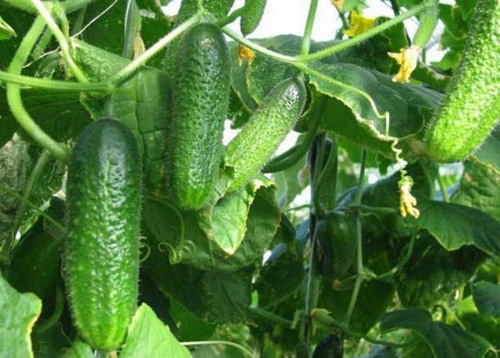
Claudia f1 is a mid-season hybrid of parthenocarpic type (does not need pollination). It is grown both in greenhouses and in open ground. The plant has long lashes that easily curl along the support. The leaves are wrinkled, saturated green in color. The root system is powerful, well developed. Empty flowers are absent. From the moment of the appearance of the first seedlings and until the harvest, an average of 53 days pass. Productivity is high and, with proper care, reaches 10 kg of greens with 1 sq. Km. m when grown on open soil and 20 kg per 1 sq. km. m when grown in greenhouse conditions.
Zelentsy have an aligned cylindrical shape, and in the cross section - rounded. Their average length is 10 cm, and their diameter is 3 cm. The average weight is 90 g. The surface of the vegetable is ribbed, has slight pubescence, and is rough to the touch. The peel is thin and delicate, rich green in color with light stripes. Has a pronounced characteristic odor. The pulp is dense and juicy, crispy, tastes good. It is not watery and there are no voids in it. The presence of bitterness is not typical. Seeds are small, inconspicuous.
A beautiful presentation has about 90% of the harvested cucumbers. Keeping quality is high. The vegetable is resistant to damage and can be transported over long distances. Despite the fact that Claudia F1 is averse to overgrowing and yellowing, it is often necessary to harvest (up to two times a day). This will stimulate the laying and filling of new ovaries. Harvested vegetables are universal in application. They are consumed raw, added to salads, salted and pickled.
Landing
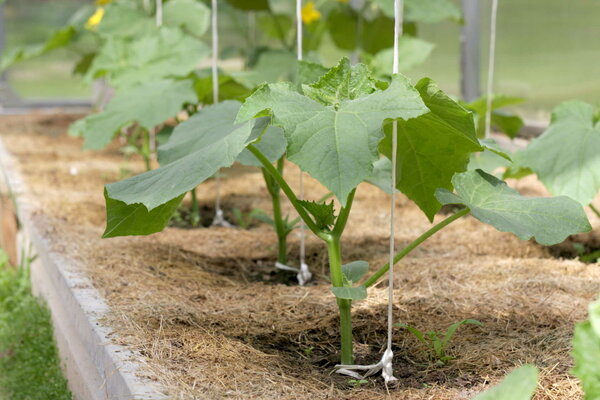
Hybrid seeds for cultivation they are not suitable. The set of improved parental characteristics manifests itself exclusively in the first generation. Therefore, seeds need to be bought every year. Breeding work and the difficulty of obtaining seed explain its high cost. Purchased seeds are often brightly colored. The atypical color indicates that the seeds are coated with a special shell, which includes nutrients and pesticides. It increases germination and increases the likelihood of a rich crop. It is not necessary to prepare such seeds before planting. They are immediately planted in the ground.
Preparation of beds
For 1 square. m of any soil make 1/2 buckets of humus, 2 cups of ash and 2 cups of bone meal, and then they all plow. The last two ingredients enrich the soil with potassium, which vegetables are most in need of. When forming high beds, half-rotted compost, dry grass or shredded branches of bushes and trees are brought down under the ground.This is necessary so that the roots of the plant are warm, and it grows well. This layer is covered with prepared soil.
Growing seedlings and planting in a greenhouse
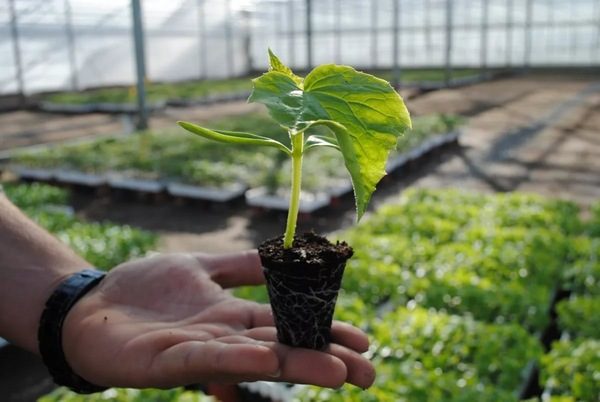
The soil for growing seedlings is bought in a store or made independently. In the second case, mix:
- 2 kg of sawdust;
- 4 kg of humus;
- 4 kg of peat;
- 2 tbsp. l ashes.
Seeds for seedlings are sown a month before its transplantation (in early April). The complexity of the seedling method of growing is that cucumbers have delicate roots that are easy to damage. To avoid this, experienced farmers grow seedlings in paper bags (the bottle is wrapped with paper and the finished cylinder is fixed with paper clips, filled with earth) or in peat pots. Seeds are laid to a depth of 3 cm, and sprinkled with soil on top.
After planting seeds, it is important to prevent the soil from drying out. Usually it is moistened by spraying their atomizer. For proper growth and development of seedlings, the room temperature should be 20 ° C. In the absence of good lighting, phytolamps are used. Thanks to them, seedlings do not stretch up and grow stronger.
After 25 days, the seedlings are planted in the greenhouse, putting the bags in wells of a similar depth. Then the cucumbers are generously watered. From this, the paper in the ground quickly soaks up and overheats. In the toga, the roots of the plant are not damaged and sprout through it. A wet bed is mulched with mowed shredded grass. It helps maintain moisture for a long time.
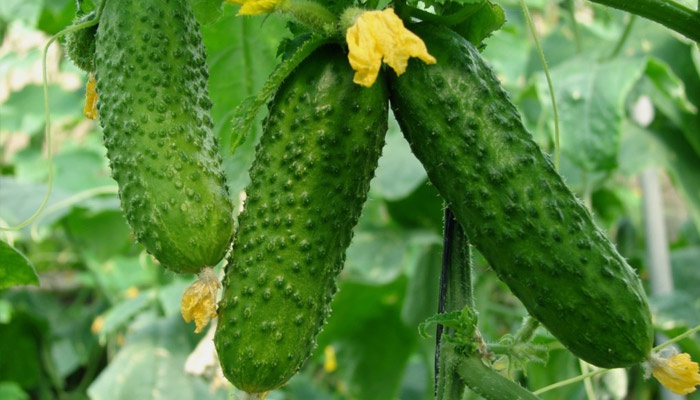 You may be interested in:
You may be interested in:Sowing seed in open soil
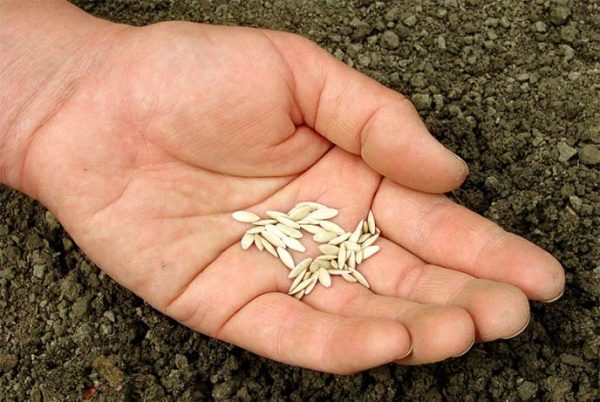
Cucumbers planted in windproof areas. The optimal row height in this case is 25 cm and the width is 80 cm. Seeds are sown in late May or early June into a groove moistened with warm water to a depth of 3 cm, maintaining a distance between seeds of 25 cm. Finally, the bed is covered with a film or agrospan .
In regions with a cool climate, where frosts are still possible at the beginning of summer, arcs are installed above the bed. Cucumbers are under cover until the end of the cold snap. Since Claudia F1 is sensitive to sunlight, corn is planted between the beds to prevent sunburn, creating a shadow for the crop. Corn seedlings are placed after 40 cm in a row. Tall plants can act as trellises for cucumber lashes.
Further care
Claudia F1 must be formed. Pinch the top of the main stem after reaching 1 m in open ground or 1.20 m in the greenhouse. Pinch lateral shoots at the turn of 0.5 m. Second-order shoots subsequently grow on them. Their growth for a length of more than 15 cm is not allowed. This is necessary to get a good harvest. On large shoots, the ovaries turn yellow and fall off, since cucumbers spend energy on growth, and not on the growth and ripening of greens.
The plant is watered daily under the root, trying not to wet the tops with it. Do it in the evening or in the morning. Typically, farmers at a distance of 30 cm from the cucumbers create a groove 5 cm deep and liquid is poured into it. Some gardeners use drip irrigation. He especially helps out in conditions of water shortage. In this case, the fluid flow is minimal, and the moistened soil stays wet longer. Under each bush, at the same time give at least 3 liters of water.
In rainy and cool weather, the wells are covered with foil. If this is not possible, watering is stopped. With prolonged cooling, they resort to the use of Epin-extra. Sprinkle a furrow for irrigation with chopped grass.Thus, the liquid is not sprayed during irrigation, and the biomaterial during decomposition will provide the cucumbers with nutrients.
Top dressing
The first feeding is done at the end of the first decade of June, and the second - 10 days after the first. In a bucket of water add 1 tsp. urea and the same amount of superphosphate, potassium sulfate. Under one plant, pour 2 liters of liquid. Experienced farmers try not to overdo the fertilizers, as their excess can adversely affect the formation of flowers and ovaries, and the tops themselves will begin to fatten.
During fruiting, cucumbers feed three times, maintaining intervals of 10 days. To prepare top dressing, use one of the following recipes:
- 1 tbsp. l nitrofoski is mixed with 1 liter of manure and diluted in a bucket of water. Consumption per bush - 1500 ml of liquid.
- 1 tbsp. l urea is mixed with 3 tbsp. l ash and 1 tsp. sodium humate, diluted in 100 ml of hot water, and then poured into a bucket of water at room temperature. Consumption - 2 liters of liquid under the bush.
- 1 tbsp. l azofoski bred in a bucket of water. Consumption - 2 liters per plant.
All radical top dressing is carried out between 10 and 12 hours. In addition, some summer residents carry out foliar feeding of cucumbers. Cloudy weather awaits for the procedure. The vegetation stage does not matter. The solution is prepared as follows: 5 g of superphosphate, 2 g of nitrate and 4 g of potassium salt are dissolved in 5 l of water. Consumption -1 liter per bush.
Diseases
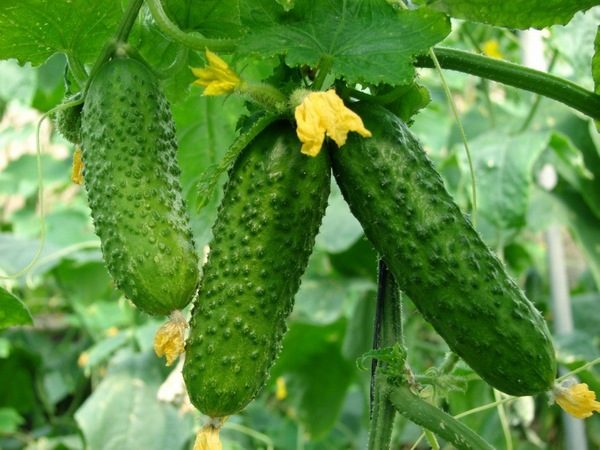
Claudia F1 is a hybrid with high phytoimmunity and therefore, when grown, it usually does not encounter any problems. However, with a significant violation of agricultural technology and adverse weather conditions, the development of such diseases is possible:
- Root rot. It is accompanied by yellowing and cracking of the lower part of the shoots, withering of the ground part of the plant. They get rid of the disease by dusting the affected areas with wood dust and irrigating the tops with soil with copper sulfate. Until the plants recover completely, the soil is not loosened.
- Green mosaic. With it, the diseased parts of the plant turn yellow and wrinkle. The problem is solved by the fact that the affected plants are transplanted to a new place. Avoidance of relapse allows compliance with crop rotation rules.
- Powdery Mildew A light coating appears on the leaves, they dry up and fall off. As the disease develops, the entire whip dies. With powdery mildew, specialists treat the tops with a soapy solution in which soda ash is diluted. In advanced cases, fungicides are used. In this case, all affected elements are removed and the frequency of top dressing with nitrogen is reduced.
- White mosaic. White or yellowish spots with characteristic asterisks form on the leaves. There are no effective measures to combat this disease, so diseased plants are dug up and burned.
Reviews
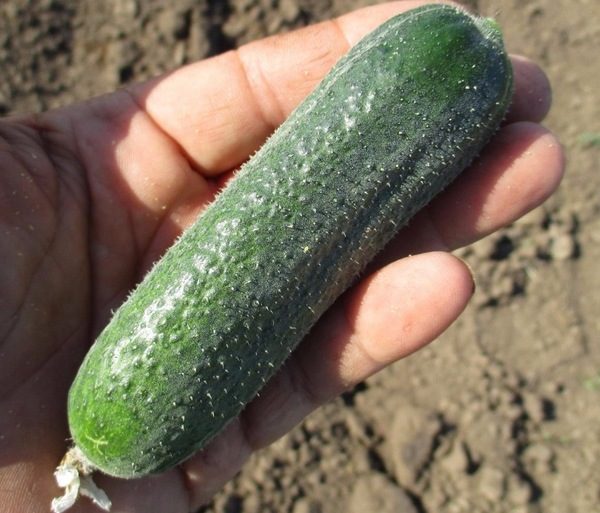
Gennady, 48 years old
Claudia F1 was first planted on the advice of a neighbor and did not regret it. The quality of the fruit is simply excellent. They are good both fresh and pickled. 2 years ago I learned that feathers can be added to the ground when forming beds. They delay the cold coming from not warmed up earth, and when decomposed, they fill the soil with selenium. I liked the result of the experiment. Cucumbers grew faster, and the harvest was generous.
Inna, 35 years old
Hybrid Claudia is completely satisfied and I'm not going to change it to any other. I like the pleasant taste of fruits and the absence of bitterness in them. Particularly pleased with the versatility of the use of vegetables in cooking. When caring for cucumbers, I do not do fertilizers myself, I do not mix any components. I just buy the “Ideal” product, I dilute it in the amount of 500 ml per 5 liters of water and water the bushes with it. I always get a good crop.
The advantages of Claudia F1 include high productivity and unpretentiousness, a pleasant taste of vegetables, as well as the ability to use them in pickling. Among the shortcomings are perhaps the lack of the ability to grow plants from seeds collected personally and susceptibility to mosaics, powdery mildew. Thus, the hybrid has much more advantages and they more than cover the cons.




 Armenian cucumber with melon flavor: description and characteristics, reviews
Armenian cucumber with melon flavor: description and characteristics, reviews Do-it-yourself vertical beds for cucumbers: schemes, photos
Do-it-yourself vertical beds for cucumbers: schemes, photos Hollow cucumbers: reasons for the appearance of hollow, what to do
Hollow cucumbers: reasons for the appearance of hollow, what to do Which manure is best for cucumbers: application, how to breed
Which manure is best for cucumbers: application, how to breed